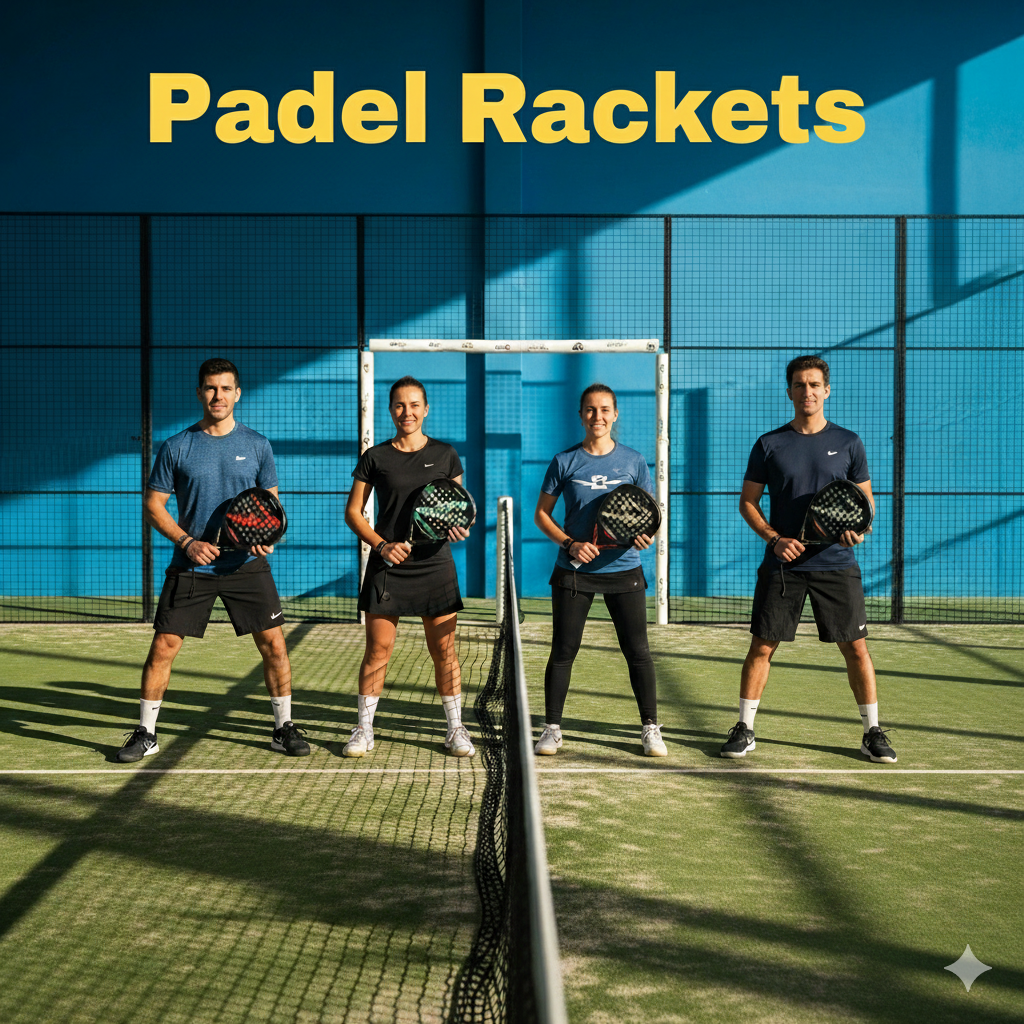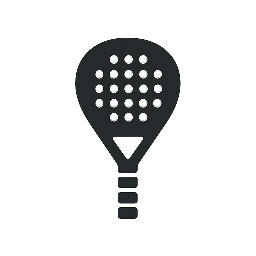Your cart is currently empty!
Tip: If you’re a beginner, begin with a round racket. It enhances your control, timing, and overall feel for the game.


Start with a racket between 320–365g to strike the right balance between control and comfort.
Choosing Your First Padel Racket.
🎾 Ultimate Guide: How to Choose Your First Padel Racket (Without Wasting Money or Time!)
Introduction
So, you’ve decided to dive into the world of padel, one of the fastest-growing sports globally — congratulations! But now you’re faced with a tricky first decision: How to choose your first padel racket?
With so many options available, brands shouting for your attention, and confusing technical specs, it’s easy to feel overwhelmed. The good news? You’re not alone, and we’re here to help.
In this guide, you’ll discover exactly what to look for in your first padel racket, avoid the most common mistakes beginners make, and walk away with confidence in your choice. Whether you’re buying for fun, fitness, or competition, this article will save you time, money, and frustration.
Why Choosing the Right Padel Racket Matters
Many beginners make the mistake of grabbing the flashiest or most expensive racket they can find. But here’s the truth: The wrong racket can slow your progress, increase injury risk, and ruin your experience.
Padel is all about technique, comfort, and control — especially when starting out. Your racket should enhance your strengths and compensate for your weaknesses, not amplify them.
✅ Fact: A 2023 study by PadelTech Europe showed that 76% of beginners switched rackets within the first three months due to discomfort or poor performance.
So how do you make the right choice from day one?
The 7 Key Factors to Consider When Choosing Your First Padel Racket
1. Racket Shape: Control vs. Power vs. Balance
Padel rackets come in three main shapes, and each affects your gameplay:
- Round (Best for Beginners)
- Larger sweet spot
- More control and maneuverability
- Reduces risk of mishits
- Teardrop (Intermediate Balance)
- Balanced power and control
- Smaller sweet spot than round
- Diamond (Advanced Players)
- Power-focused
- Requires better technique
- Smaller sweet spot
Tip: As a beginner, always start with a round racket. It will help you develop better control, timing, and feel for the game.
2. Weight: Light vs. Heavy
- Light Rackets (320–360g)
- Easier to maneuver
- Reduces arm fatigue
- Ideal for women, youth, and beginners
- Heavy Rackets (360–390g)
- More power
- Requires strength and skill
- Riskier for joints if used improperly
Recommendation: Start with a racket between 320–365g to strike the right balance between control and comfort.
3. Material: Fiberglass vs. Carbon Fiber
- Fiberglass
- Softer, more flexible
- Lower price point
- More forgiving
- Carbon Fiber
- Stiffer, more durable
- Higher performance
- More expensive
Beginner Advice: Look for a fiberglass surface with an EVA Soft foam core. This combination provides comfort, helps avoid injuries like tennis elbow, and improves touch.
4. Grip Size and Comfort
Never underestimate grip size and texture. A poorly fitted grip leads to wrist strain and poor control.
✅ Pro Tip: If you’re unsure, start with a smaller grip and add an overgrip for adjustment. It’s cheaper and easier to modify.
5. Brand and Price
Premium brands like Bullpadel, Nox, Head, and Adidas dominate the market, but you don’t need to spend €250+ on your first racket.
Ideal Budget for Beginners: €70–€120
At this price range, you’ll find excellent rackets with quality materials, soft cores, and ergonomic designs made for learning. Check out this beginner racket by IANONI
6. Durability and Core Type
- Soft EVA Foam Core: Ideal for beginners
- Medium-Hard EVA or Foam Core: Advanced players who prioritize power
Soft cores offer more ball output, meaning less effort per shot — crucial when you’re still learning form and swing mechanics.
7. Personal Goals & Playing Style
Ask yourself:
- Do I want to play recreationally or compete?
- Am I naturally aggressive or defensive?
- Do I value control or power?
Tailoring your racket to your playstyle and future goals ensures longevity in your choice. For example, if you’re more defensive, go for a lighter, round-shaped racket with high control.
Frequently Asked Questions (FAQ)
❓ Is it worth investing in an expensive racket as a beginner?
No. Your technique will evolve, and your first racket is for learning. Focus on comfort and control — upgrade later as your skills develop.
❓ How long will my first padel racket last?
With average use (2–3 times per week), a beginner racket should last 12–18 months before signs of wear affect performance.
❓ Should I try before I buy?
Absolutely. Test rackets at a local club or demo event whenever possible. Hands-on experience can prevent costly mistakes.
❓ What’s the biggest mistake beginners make?
Buying a racket that’s too heavy or too advanced, leading to arm injuries and frustration.
Conclusion: Make the Smart Choice from the Start
Choosing your first padel racket doesn’t have to be complicated — but it does require a little strategy. By focusing on shape, weight, material, and your personal playstyle, you’ll find a racket that fits like a glove.
✅ Your first padel racket should feel like an extension of your hand — not a burden.
Avoid the noise, ignore the hype, and make a smart, informed purchase. Your future self (and your game) will thank you.

Leave a Reply